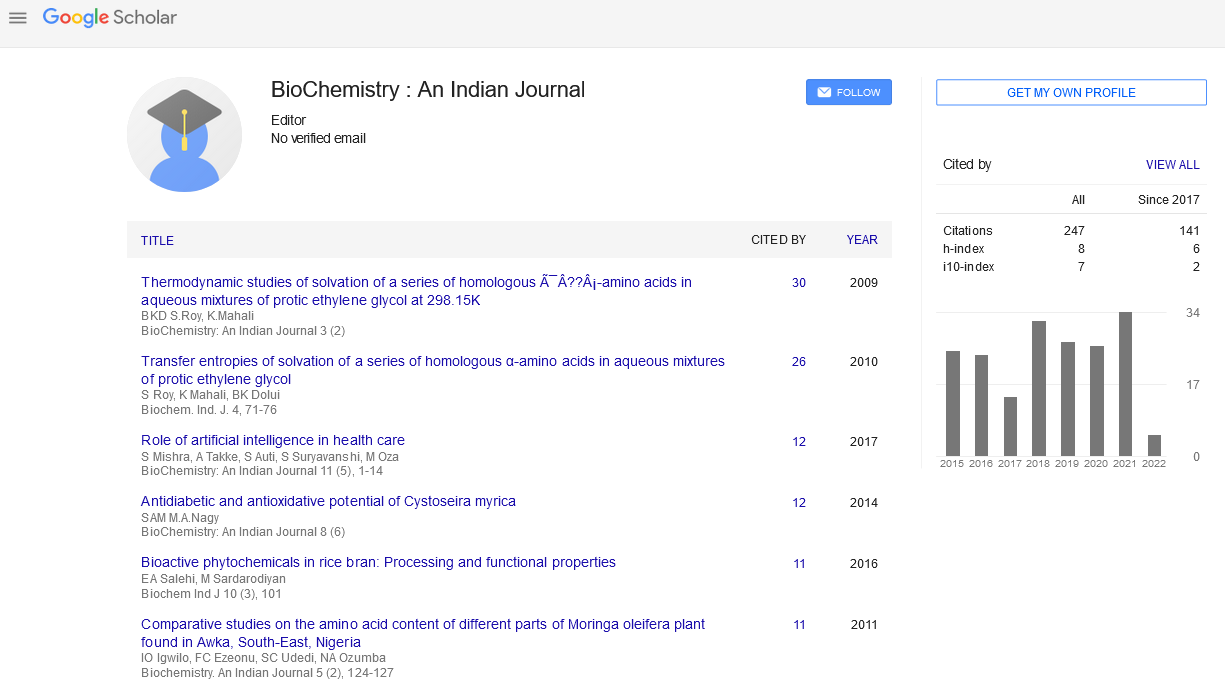Abstract
Assessment of iodine status of some selected populations in Anambra state, Nigeria
Author(s): Ifeyinwa Chidiogo Olife, Benedette Azuka Anajekwu, Agwu Kama OnuogbuThe study was designed to determine the iodine status of selected population in Oba and Nanka communities of Anambra State and assess their risk to Iodine DeficiencyDisorders (IDD). Iodine is excretedmainly in the urine with smaller amounts appearing in the feaces and sweat. Urinary iodine excretion represents 75-90% of total intake and is therefore the accepted method of assessing iodine status. Urinary iodine levels of selected school children and women of child bearing age in both communities were determined. The result showed that the mean urinary iodine concentration of 170.65±27.17µg/L in school children from Oba is significantly higher (p<0.05) compared to the mean concentration of 156.12±16.48µg/L found in school children from Nanka. However, the mean urinary iodine concentrations of the women were not significantly different in the two communities. Extensive dietary supplementation programmes, often based on the addition of iodized oil, iodized salt or iodination of irrigationwater have successfully lowered the incidence of IDD in countries such as China, USA, Switzerland, Papua Guinea and India. It is now well recognized that the most effective way to achieve the virtual elimination of IDD is through universal salt iodization. Universal salt iodization involves iodization of all human and livestock salt, including salt used in food industries.Adequate iodization of all saltwill deliver iodine in the required quantities to the population on a continuous and self-sustaining basis. Therefore, the levels of iodine in salt samples purchased fromlocalmarkets in the two communities were determined. The results showed that the levels of iodine in salt samples fromObamarket ranged from7-30ppmwhile the levels of iodine in salt samples from Nanka market ranged from 0- 30ppm. One teaspoon of iodine is all a person requires in a lifetime and yet its deficiency at critical stages of fetal life and early childhood remains the worldÂ’s single most important and preventable cause of mental retardation.

